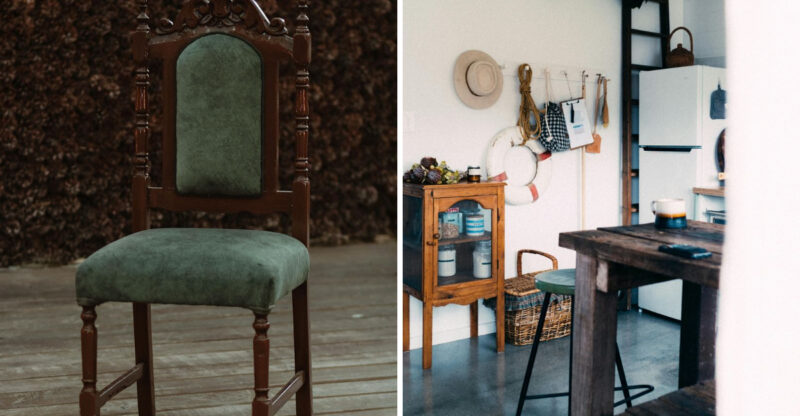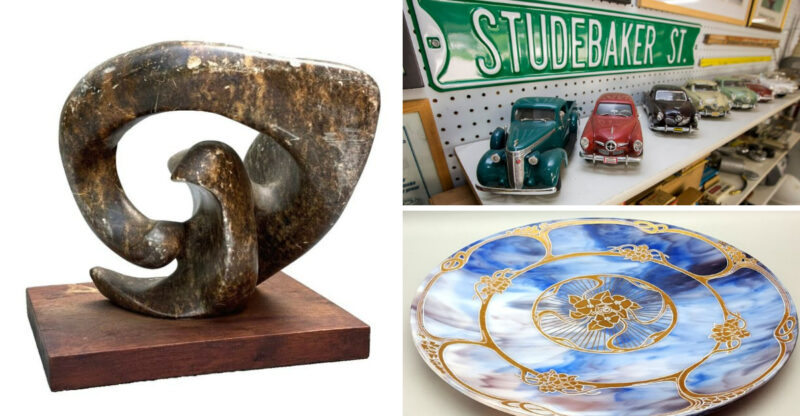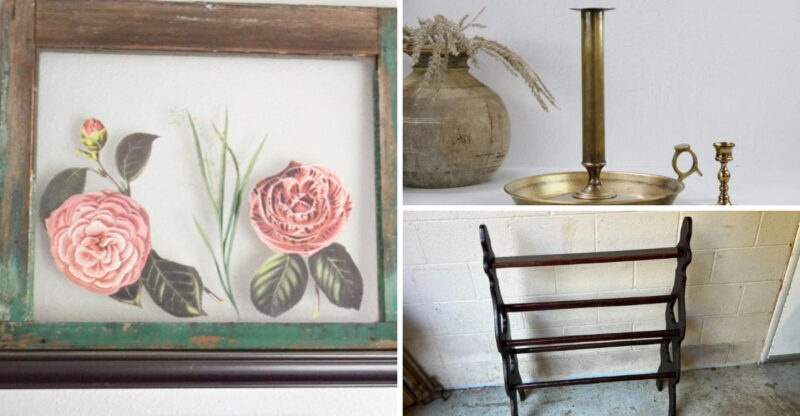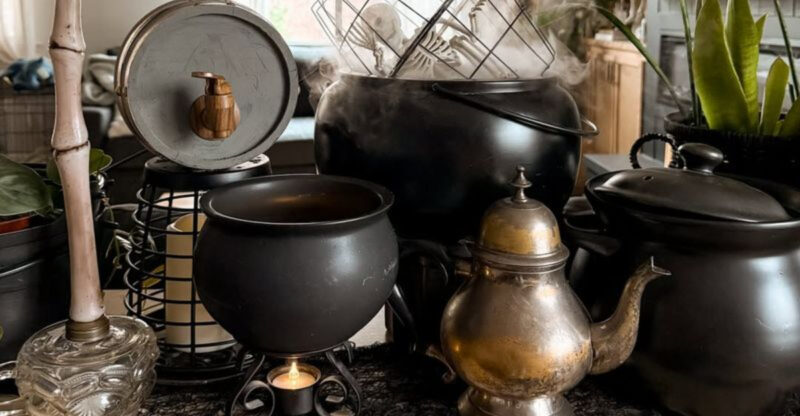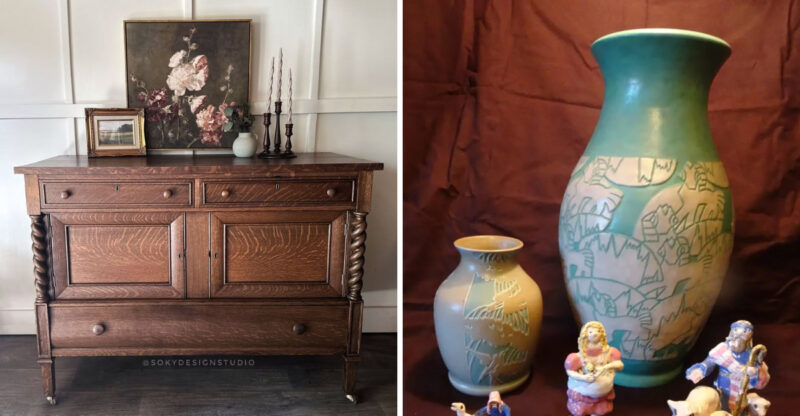2026 Collectibles Forecast 6 Antiques You Should Hold And 7 That Could Drop
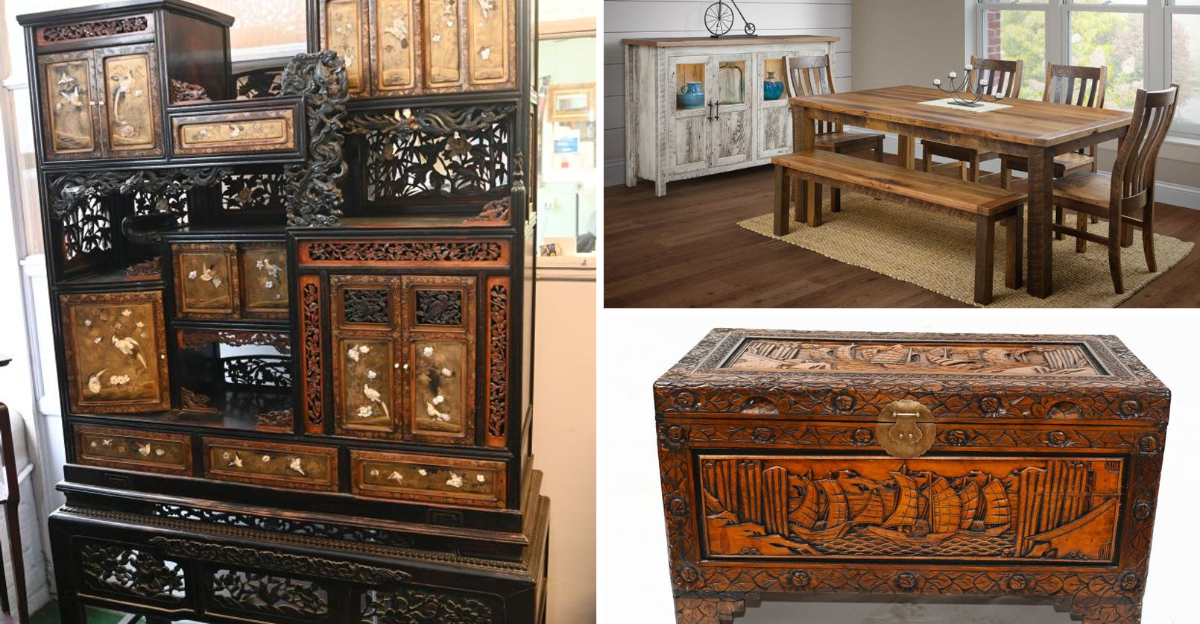
The antiques market is always changing, with some items gaining value while others lose their shine.
As we look ahead to 2026, smart collectors are already planning which pieces to keep and which to sell.
I’ve studied market trends and talked with experts to identify which antiques might be worth holding onto and which could see their values tumble in the next few years.
1. Victorian Sideboard (could drop)

Massive Victorian sideboards are falling out of favor with younger homeowners who prefer smaller, more functional furniture. These ornate pieces, once staples in dining rooms across America, now struggle to find buyers at estate sales.
Space constraints in modern homes make these bulky items impractical, and their dark, heavy appearance clashes with today’s lighter design trends. Many millennials and Gen Z buyers view them as outdated relics rather than treasured antiques.
If you own one, consider selling before prices fall further. The market is already showing signs of weakness, with some pieces selling for half what they would have fetched just five years ago.
2. Art Deco Chair (could drop)
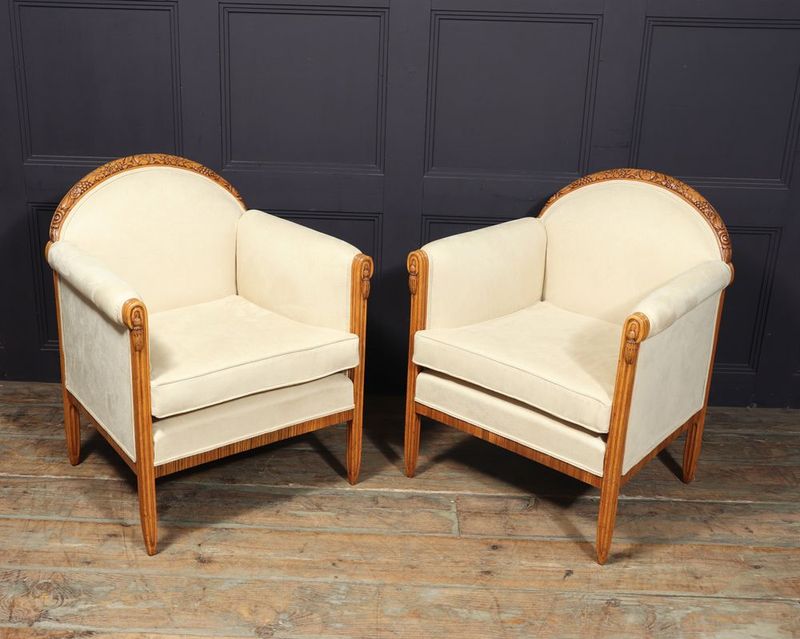
Art Deco furniture has enjoyed a long renaissance, but market saturation is becoming a problem. Reproduction pieces flood online marketplaces, making authentic items harder to distinguish and driving down overall values.
The distinctive geometric patterns and chrome accents that define Art Deco chairs are increasingly viewed as statement pieces rather than everyday furniture. This limits their appeal to specialty collectors rather than general buyers.
While top-tier examples by known designers will retain value, mid-range and anonymous Art Deco chairs face declining demand. I’ve noticed auction prices softening, with reserve prices often unmet and pieces returning to storage unsold.
3. Mid-Century Coffee Table (could drop)
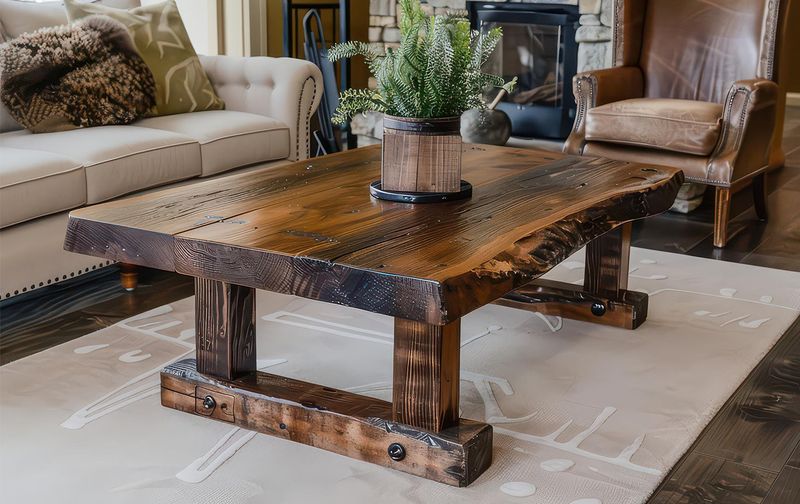
Mid-century modern furniture has dominated design trends for over a decade, but the market appears to be cooling. Mass retailers now offer convincing reproductions at a fraction of the cost of authentic pieces, satisfying casual enthusiasts without the vintage price tag.
Those sleek, tapered legs and clean lines that define mid-century coffee tables have become so ubiquitous that they’ve lost their distinctive appeal. Even genuine 1950s and 60s pieces by lesser-known manufacturers struggle to command premium prices anymore.
When trends shift, as they inevitably do, these tables could see significant value drops. If you’re not personally attached to your mid-century coffee table, selling within the next year might be a smart move.
4. Edwardian Wardrobe (could drop)

Edwardian wardrobes face a practical problem they’re simply too large for modern homes. These imposing storage pieces were designed for spacious Victorian and Edwardian houses with high ceilings, not today’s compact living spaces.
Moving these massive pieces presents another challenge, with many movers charging premium rates or refusing to handle such bulky antiques. Young buyers typically prefer built-in storage solutions or modular systems that can adapt to different spaces.
The market already shows weakness, with many Edwardian wardrobes selling for little more than the cost of delivery. Unless your piece has exceptional provenance or unusual features, its value will likely continue to decline through 2026.
5. Hand-Carved Armchair (should hold)
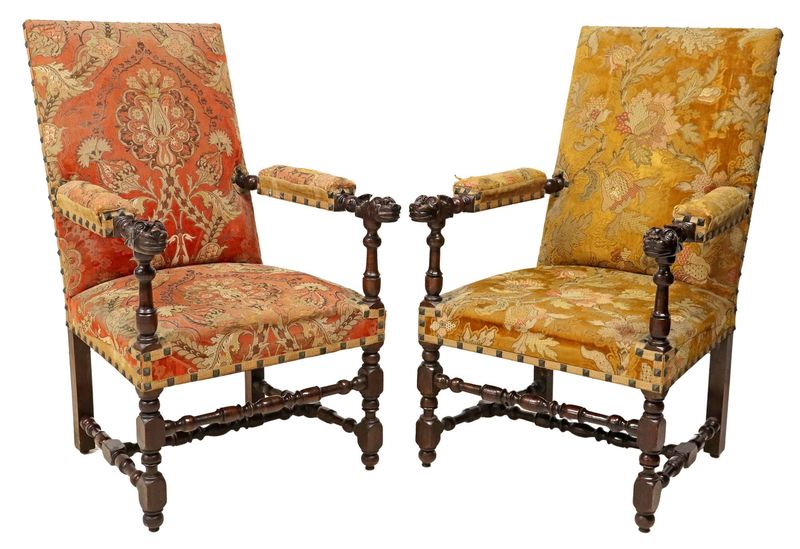
Exceptional hand-carved armchairs from recognized periods maintain strong investment potential through 2026. Unlike factory-produced seating, these artisanal pieces showcase irreplaceable craftsmanship that grows more valuable as traditional woodworking skills become increasingly rare.
Renaissance revival chairs and Gothic-inspired examples show particular promise for appreciation. Their dramatic silhouettes and intricate detailing create statement pieces that transcend passing trends, attracting serious collectors and design enthusiasts alike.
Chairs with documented workshop origins or regional characteristics command premium prices. I’ve noted consistent demand for examples with original upholstery foundations, though recovered surfaces rarely detract from value. While mass-market antique chairs struggle, museum-quality carved examples continue appreciating, representing sound investments for discerning collectors focusing on exceptional craftsmanship rather than passing fashions.
6. Retro Dining Set (could drop)
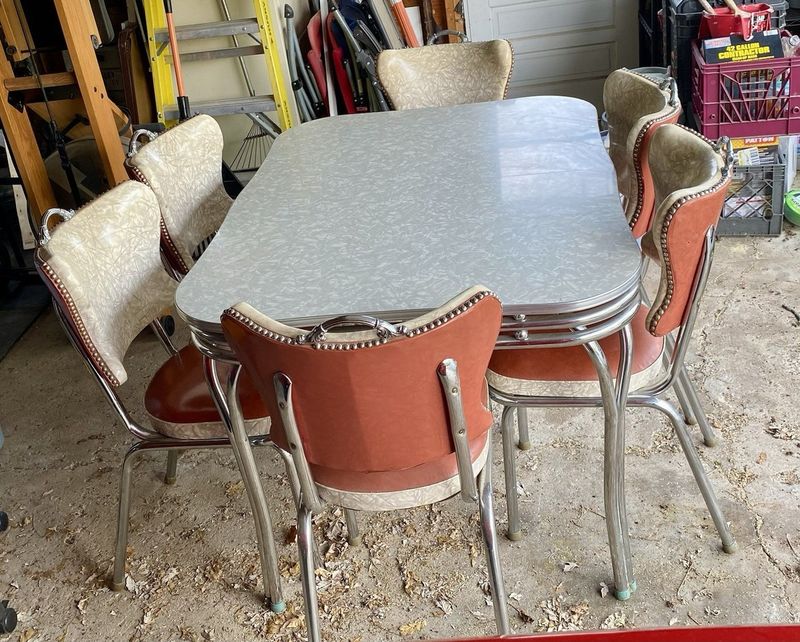
Chrome and Formica dining sets from the 1950s and 60s have enjoyed popularity as kitsch collectibles, but their appeal is waning. These once-novel pieces now appear dated rather than retro-chic, and their condition issues are becoming harder to overlook.
Wear patterns on vinyl seats, chipping Formica, and rusting chrome legs plague many surviving examples. Finding replacement parts or qualified restoration specialists gets harder each year, making these sets increasingly impractical investments.
Though certain high-end designer sets maintain their value, standard mass-produced retro dining furniture faces declining demand. Collectors who previously sought these pieces for nostalgia are aging out of the market, while younger buyers show limited interest in preserving this particular era of American design.
7. Vintage Rocking Chair (could drop)
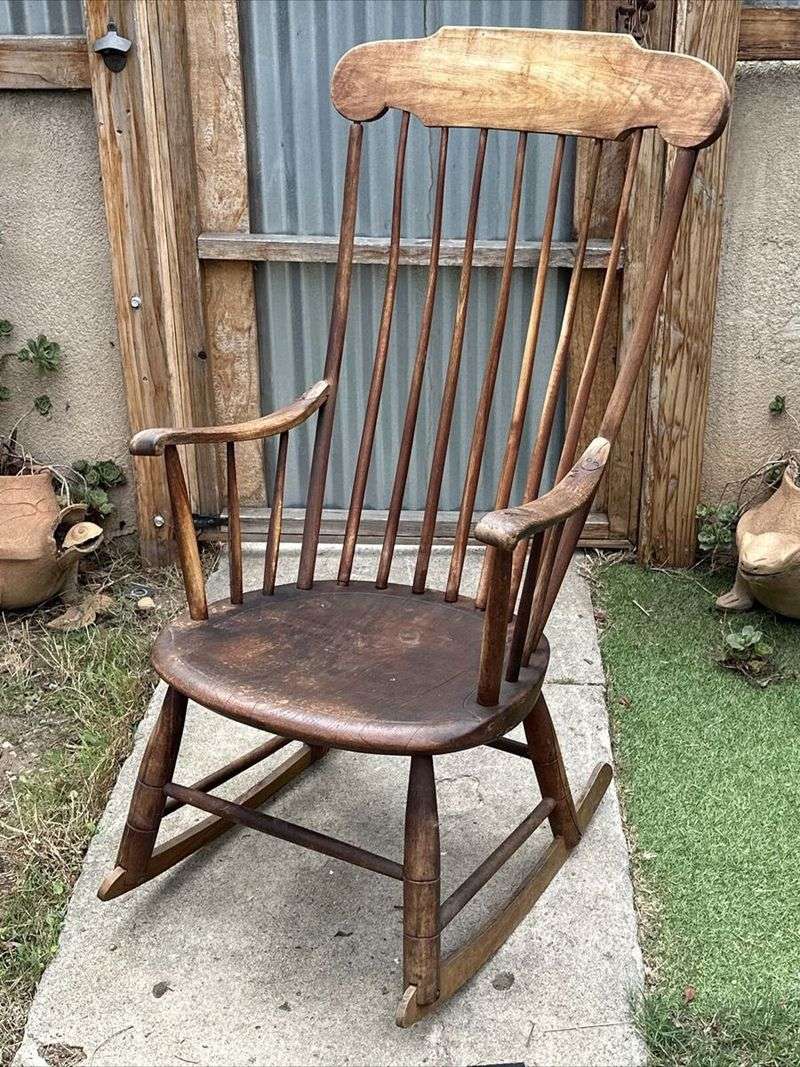
Standard vintage rocking chairs without distinguished pedigrees or exceptional craftsmanship face a challenging market ahead. These once-common household items have lost their functional place in modern homes where space efficiency is prized.
Most contemporary buyers view basic rockers as quaint relics rather than useful furniture. The exception remains high-quality nursing rockers, which maintain appeal for new parents, but ordinary porch or living room rockers struggle to find homes.
Factory-made rockers from the early-to-mid 20th century particularly face value declines. I’ve watched prices steadily fall at regional auctions, with many selling for under $100 regardless of condition. Unless your rocker has documented historical significance or exceptional artistic merit, consider selling before the market deteriorates further.
8. Antique Bookshelf (should hold)
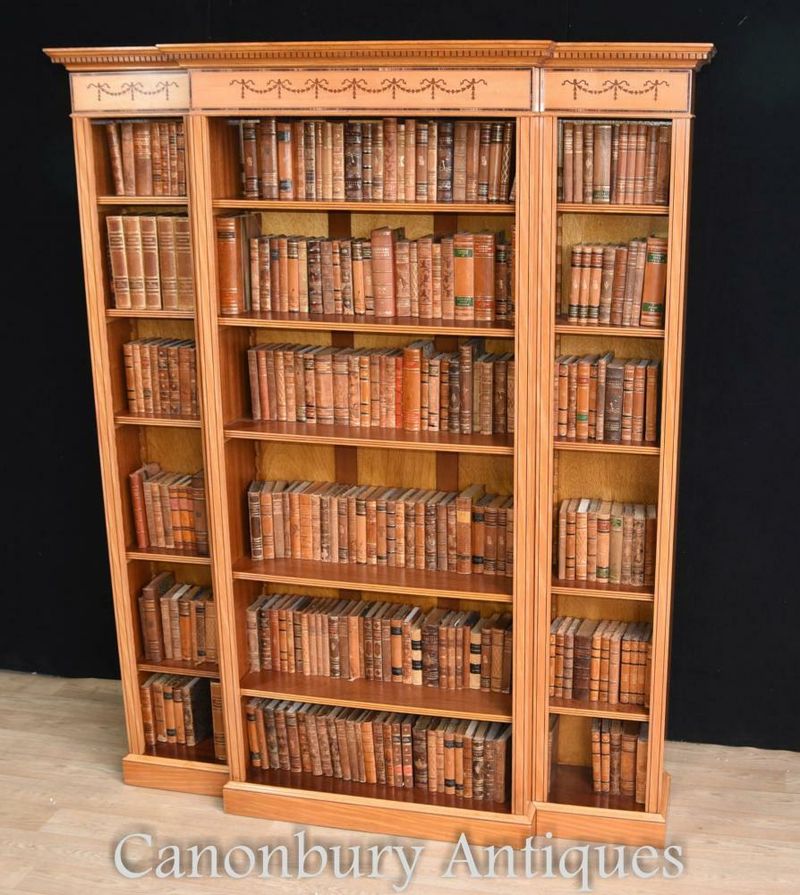
Quality antique bookshelves remain surprisingly resilient in value, bucking the trend of declining furniture prices. Despite digital reading’s popularity, physical book collections continue growing, creating steady demand for beautiful display shelving.
Versatility gives these pieces staying power – they work equally well in home offices, living rooms, or as room dividers. Their practical storage function ensures they never become purely decorative, unlike many other antiques.
Look for solid wood construction, adjustable shelving, and original hardware when investing. Barrister bookcases with glass-fronted sections command particular premium prices. I’ve tracked auction results showing consistent appreciation for exceptional examples, especially those with documented provenance or from recognized cabinetmakers.
9. Heirloom Chest (should hold)
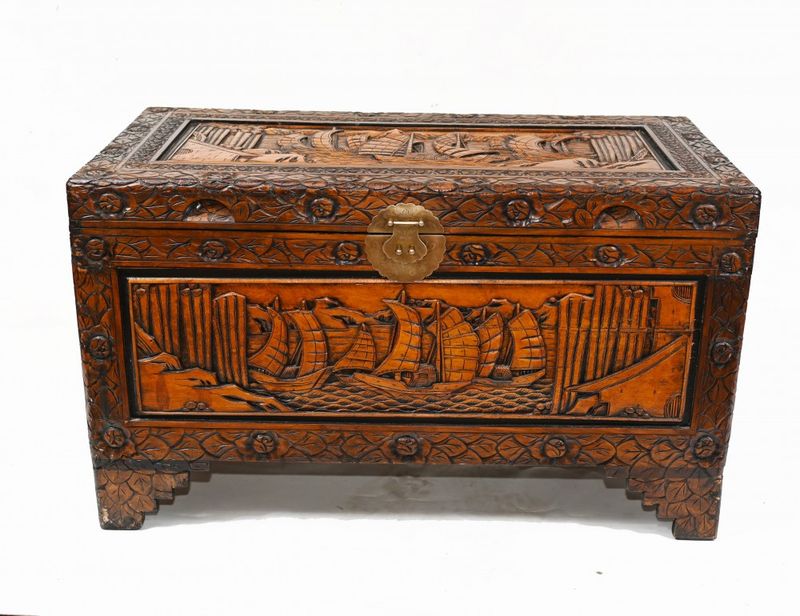
Hand-crafted wooden chests from the 18th and 19th centuries continue appreciating in both value and desirability. Their combination of practical storage and decorative appeal makes them perfect for modern homes seeking character pieces with functionality.
Sea chests, hope chests, and blanket boxes all maintain strong market positions. Their compact size fits easily into contemporary spaces, unlike larger antique furniture pieces that struggle to find homes in smaller modern dwellings.
What makes these items particularly investment-worthy is their cross-cultural appeal. Whether American, European, or Asian in origin, well-preserved chests attract global buyers. I’ve noticed especially strong demand for examples with original paint, documented family histories, or distinctive regional characteristics that tell stories about their origins.
10. Classic Mahogany Desk (should hold)
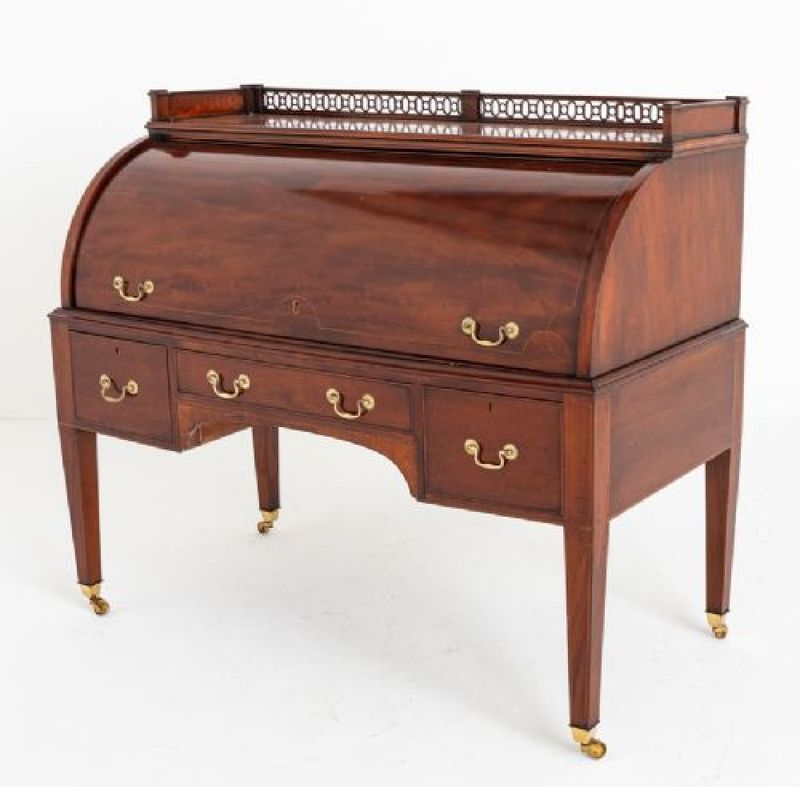
Fine mahogany desks from the Federal and Regency periods represent solid investment potential through 2026 and beyond. The rise of home offices has created renewed appreciation for substantial, well-crafted writing surfaces with historical significance.
Unlike mass-produced office furniture, these desks offer exceptional craftsmanship with dovetailed drawers, hand-carved details, and figured wood that’s increasingly rare. Their enduring elegance transcends trends, making them perennially desirable to serious collectors and discerning homeowners alike.
Partner desks and secretary desks with bookcase tops command particular premium prices. I’ve witnessed fierce bidding wars at recent auctions for examples with clean provenance, suggesting strong continued demand. Genuine period pieces in good condition should maintain or increase their value over the next several years.
11. Rustic Farm Table (should hold)
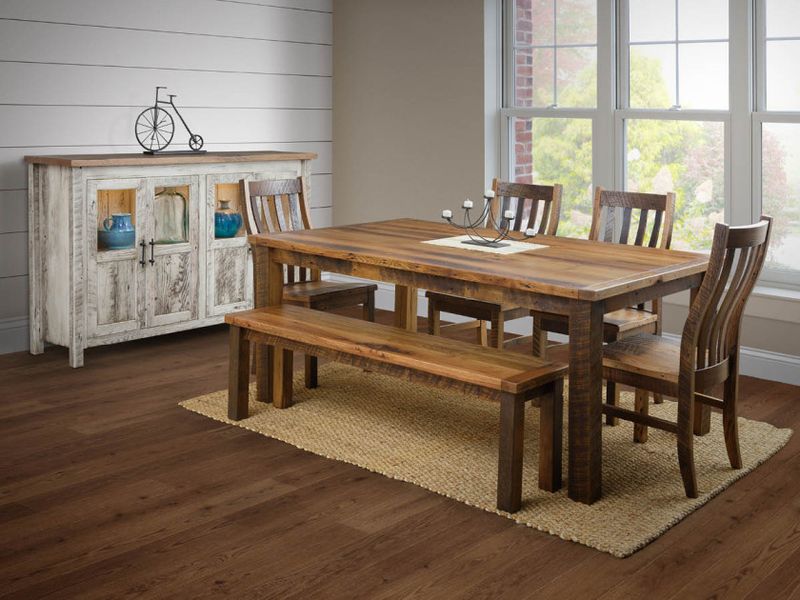
Authentic farmhouse tables from the 18th and 19th centuries continue defying market fluctuations, maintaining strong value even as other antiques struggle. Their practical dimensions and durable construction make them ideal for modern family gatherings and entertaining.
Genuine examples with visible hand-planing, period joinery, and natural patina command premium prices. The modern farmhouse design trend has created sustained demand for these tables as centerpiece items that anchor dining spaces with authentic character.
French provincial farm tables particularly maintain strong investment potential, with their characteristic breadboard ends and stretcher bases. I’ve observed steady price appreciation for tables with documented age and origin. Even as reproduction pieces flood the market, discerning buyers increasingly recognize and value the craftsmanship and historical significance of authentic examples.
12. Period Mirror (should hold)
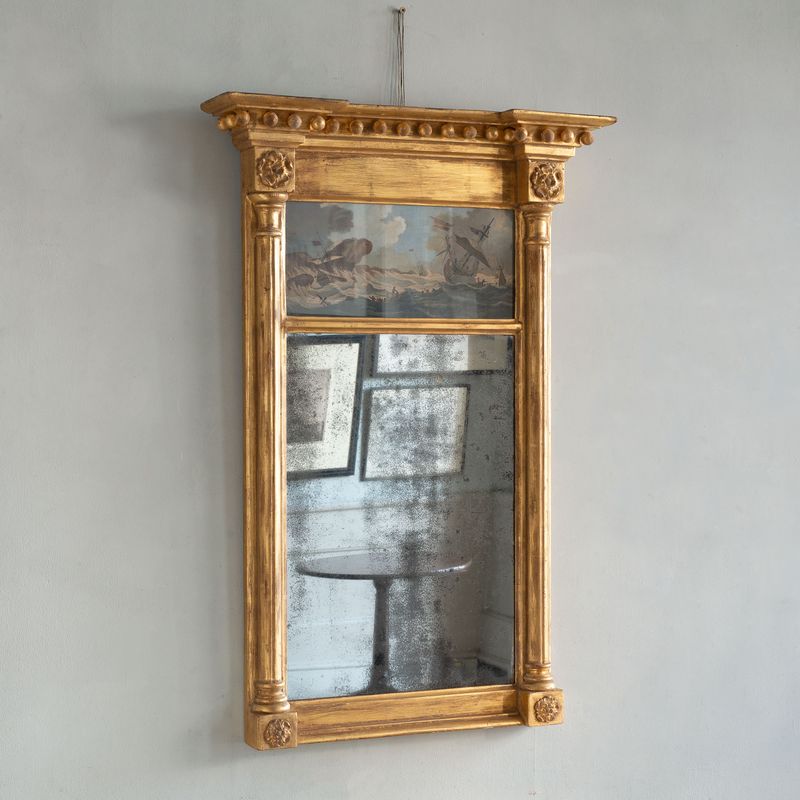
Fine mirrors from distinct historical periods continue appreciating in value, with particularly strong performance from Federal, Empire, and Regency examples. Their dual function as both practical reflective surfaces and decorative wall art ensures enduring appeal across changing interior design trends.
Mercury glass mirrors with original backing maintain particular investment value. Their distinctive patina creates a depth and luminosity impossible to replicate in modern productions, making them increasingly sought after by designers and collectors alike.
Gilt frames in good condition further enhance value, especially when featuring period-appropriate motifs like eagles, classical figures, or architectural elements. I’ve tracked auction results showing steady price increases for exceptional examples with clear provenance. Quality period mirrors represent one of the safest antique investments for the coming years.
13. Ornate Cabinet (should hold)
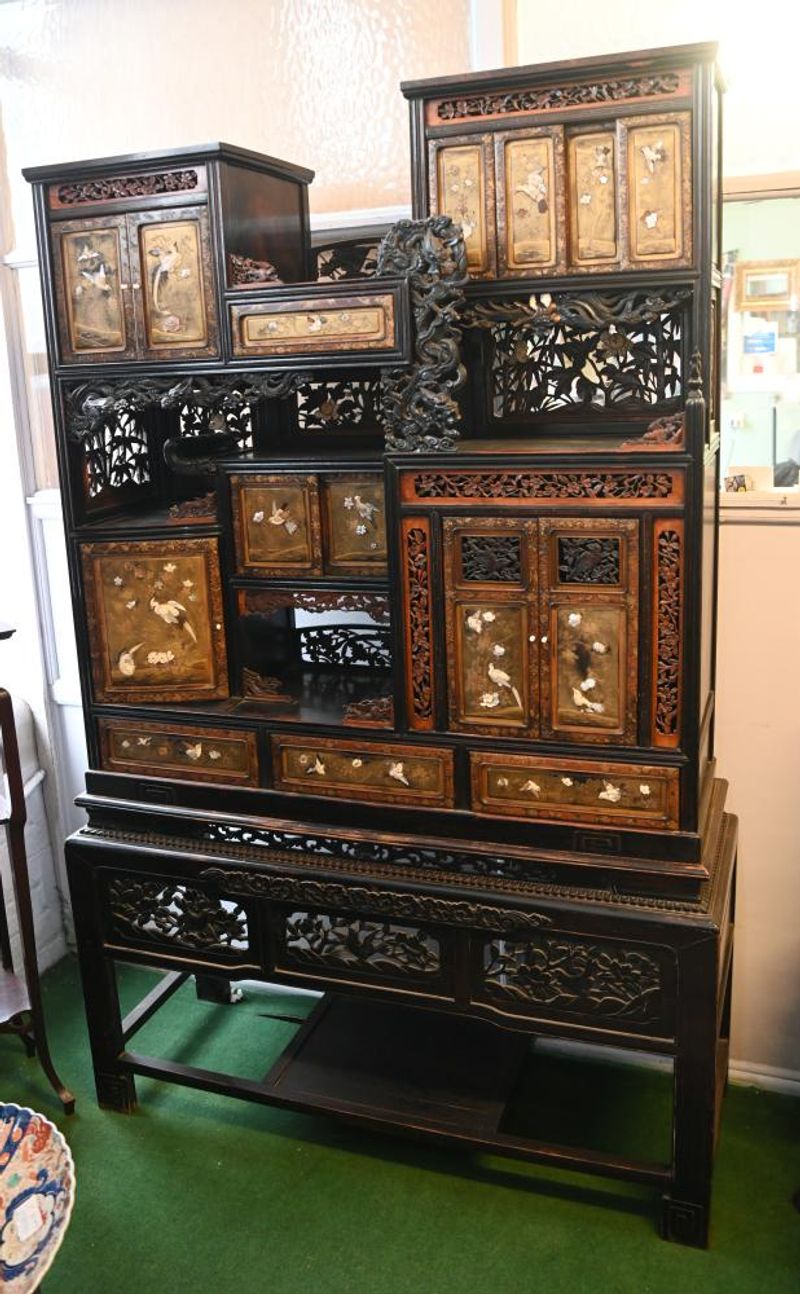
Exceptional display cabinets from the 18th and 19th centuries buck the downward trend affecting many antique furniture categories. Their combination of display and storage functions makes them perpetually useful in modern homes, while their craftsmanship provides investment-grade quality.
Chinese lacquer cabinets and Japanese tansu chests show particularly strong appreciation potential. The growing global interest in Asian antiques drives consistent demand from collectors worldwide, creating a stable investment outlook.
Cabinets with documented provenance from noted cabinetmakers or historical owners command premium prices. I’ve witnessed steady value increases for pieces with original hardware, finish, and glass components. While reproduction pieces saturate the lower market, genuine period examples with distinctive characteristics continue appreciating, making them solid investments through 2026.

